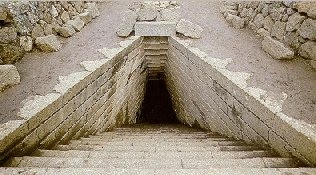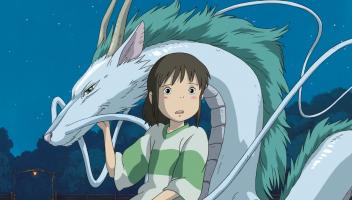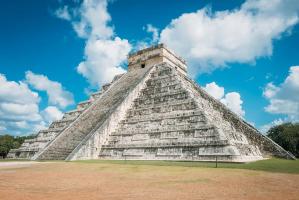Copy Link
Add to Bookmark
Report
The Space Between 01

From cclash@web.apc.orgFri Dec 1 01:04:20 1995
Date: Thu, 30 Nov 95 21:34:14 -0500 (EST)
From: "Jocelyn J. Paquette Bob Ewing" <cclash@web.apc.org>
To: pauls@etext.org
Subject: submission
00100101010100001010101000101010110101010101010001010101010101010
10101010101010010101010000010011111110010010101010001010101010101
the space between
101010101001010110101001010110100101010
101010100010111010101010101010010110110
Welcome to the first edition of the space between
an bi-monthly ezine exploring culture, art,
society and creation. the space between is
published by culture clash communications
[cclash@web.pac.org] Editor: Rl Ewing
010101101101010010100101010101010110110101010101
The means are to the end as the seed is to the tree.
attributed to Ghandi.
010101101101101011010101110100101010101010101010101
Editor's Corner:
I've been surfing the net since early in 1987.
My experiences have ranged from exhilarating to
downright baffling. There have been times when I'd
rant about the dangers of living in a digital world
and other times when I can't stop praising the
possibilities. Two things have remained constant.
One is my conviction that online communication is a
marvellous method to reach out and make contact with
people. It doesn't matter what your interests, you
will find someone to talk with. The other is that
the most important issue facing us, in regard to
online communication, is access.
Not everyone has a home computer; on a global
scale there are numerous places where telephone
connection is scarce or non-existent, never mind
fibre-optic cables. The next time you find yourself
referring to the global village, remember that the
vast majority of the world's peoples are not
connected.
If we are to truly think globally then we must
consider ways and means to communicate with those
who aren't on the Net. Radio is an effective
communication tool. It is even interactive if there
is a telephone nearby. The recent invention of the
wind-up radio eliminates the need for electricity.
Wind this radio up and it runs for fourty minutes.
Enough time for a news or documentary program.
This enables people to receive information anywhere.
The greatest danger of digital networking is
that it can lead to a greater disassociation from
the organic world. We now can meet all our needs and
never step outside. This is one reason that it is
important to remember that those of us who are on
the Net are still a minority; a privileged minority.
We need to use this resource with wisdom; we have
the ability to plan conferences; in fact it is
possible to hold the conference in cyberspace,
organize rallies and conduct research from our homes
and offices. We must use this ability to bring
about change; however, we must never forget the
question of access and never stop asking how we can
increase access without negative ecological impact.
We can significantly reduce our use of paper through
digital technology; but we must remain human and an
elemental part of nature as we do so.
Now That I've got by that:
THE JOYFUL NOISE
Ring a bell! Bang a gong! Pound a drum! On October 31, 1996
at 6:00pm eastern standard time join the Joyful Noise.
Once you have made your noise create a mail or email art piece to
commemorate your experience. Please limit size to 8x10 inches.
mail all work to Culture Clash Communications for exhibit
in mid-November 1996. Mailing address Culture Clash
Communications, Box 24046, 70 N. Court Street, Thunder
Bay, Ontario, Canada, P7A 8A9; email: cclash@web.acp.org. All
entries will be exhibited.
the garden
the garden; an intersection between nature and culture;
where town and country meet [rural/urban]. A garden is a
unique dialectical interrelationship between human
beings, nature and socicultural traditions. Norris Brock
Johnson.
The garden may well be the place where nature and
culture meet; however, millions of us have to rely on public
gardens to experience this interaction. Unfortunately, a
public garden is just that, public, not always a good place
for quiet contemplation. Many of us cannot afford the luxury
of a private backyard garden, stuck living in prefab boxces,
as too many of us are. We can create out own indoor garden
space; whether it be one plant or a collection. All plants
require similar things, light, water, soil, and food. The
only difference is how much. It doesn't matter what your
indoor living conditions, you can find a plant that while
thrive.
Air plants take up water from humid air and live on
nutrients from air-born dust. Imagine a use for dust. If you
have plants and they are not thriving; either you are not
looking after them right or you have the wrong plants for
your space. Take a trip to the library or go online and find
out what your plants need. If you don't have a plant, check
the light and heat in you space and obtain a plant, perhaps a
cutting from a friend, plants don't have to cost money. They
propogate readily and can be given away.
If your space is very small, consider a terrarium.
Terrariums can be made from glass or plastic bottles. there
are a number of plants that are ideal for terrariums and
upkeep is minimal. If you have any plant questions email me
at cclash@web.apc.org.
BIODYNAMICS:
Increasing corporate and technological control in the seed
industry raises alarming questions about future (and present)
access to the most fundamental gentic pool of plant breeding
and seed stock. Not only access to, but the right to
freely use, trade, give and grow seed.
In many cases the solutions offered us in this situation are
vague at best. We need to develop our own coherent strategy
on how to ensure the future continuity of Biodynamic Seed --
and Soil.
The soil into which our seed is placed is obviously of no
less importance to us than the seed itself. The interplay and
weaving between these two create the plants upon which our
nutrition is based. Again, observing the treatment of the
soil today as dirt raises serious questions about the
future of this living element that forms the basis of
agriculture and human development.
In Biodynamics, the questions of seed and soil do not arise
without an even greater context. Biodynamics rests upon
working with more than good organic practices and the renewal
of agriculture depends upon our increasing our understanding
of true dynamic, causative forces and in our successful
applications of this understanding.
-- Charles Beedy
=============================================================
The B-D Association is not on-line presently. If you have any
questions (or suggestions!) and feel you must use email,
please route them through me at igg@his.com.
THE GENE MAP:
One important aspect of genetic engineering projects is to
identify the DNA gene that controls a particular trait. In
the same way that a visitor might use the state, city,
street, and house number to locate a friend's house, genetic
engineers use genetic "maps" to locate genes. The genetic
maps are generated by statistical analyses, PCR, RFLP, and
DNA sequencing. Maps are being developed for humans, mice,
swine, cattle, corn, wheat, and other plants or animals with
commercial or research importance.
Biotechnology Defined
Biotechnology can be broadly defined as "using living
organisms or their products for commercial purposes." As
such, biotechnology has been practiced by human society
since the beginning of recorded history in such activities
as baking bread, brewing alcoholic beverages, or breeding
food crops or domestic animals.
A narrower and more specific definition of biotechnology
is "the commercial application of living organisms or their
products, which involves the deliberate manipulation of their
DNA molecules. This definition implies a set of laboratory
techniques developed within the last 20 years that have been
responsible for the tremendous scientific and commercial
interest in biotechnology, the founding of many new
companies, and the redirection of research efforts and
financial resources among established companies and
universities. These laboratory techniques provide scientists
with a spectacular vision of the design and function of
living organisms, and provide technologists in many fields
with the tools to implement exciting commercial
applications.
Principles of Biology
All living organisms are composed of cells that contain a
substance called DNA (deoxyribonucleic acid) in the
chromosomes. The structure of DNA molecules contains
information that is used by cells as a "recipe" for the
organism; that is, the characteristics of any living thing
essentially are determined by the information in DNA.
The "words" for the DNA recipe, called genes, are derived
from a 4-letter alphabet (A, C, G, T) and usually contain
between 1,000 and 100,000 letters. The entire recipe, called
the genome, may contain between 4 million (simple bacteria)
and 3 billion (human) letters or more.
Except for the sequence and number of letters in each
recipe, DNA from any organism is chemically and physically
the same. One of the great scientific discoveries of
biotechnology is that DNA from any organism will function if
it is transferred into any other organism!
Using Biotechnology to Modify Plants and Animals
Combining DNA from different existing organisms (plants,
animals, insects, bacteria, etc.) results in modified
organisms with a combination of traits from the parents. The
sharing of DNA information takes place naturally through
sexual reproduction and has been exploited in plant and
animal breeding programs for many years.
However, sexual reproduction can occur only between
individuals of the same species. A Holstein cow can be mated
with a Hereford bull because the two animals are different
breeds of the same species, cattle. But trying to mate a cow
with a horse, a different species of animal, would not be
successful.
What's new since 1972 is that scientists have been able to
identify the specific DNA genes for many desirable traits
and transfer only those genes, usually carried on a plasmid
or virus, into another organism. This process is called
genetic engineering and the transfer of DNA is accomplished
using either direct injection or the Agrobacterium,
electroporation, or particle gun transformation
techniques. It provides a method to transfer DNA between any
living cells (plant, animal, insect, bacterial, etc.).
Virtually any desirable trait found in nature can, in
principle, be transferred into any chosen organism. An
organism modified by genetic engineering is called
transgenic.
COMMODITIES AND CONTROL:
BY rl ewing.
We live in a commodity culture. Everything is for sale.
The ability to manipulate genes empowers the manipulators
with the ability to create and copyright new products. This
gives them power over life itself. This is too much power for
any indivudal or organization to posses. Seeds, that from
which all life springs, cannot be copywritten. Seeds belong
to all people, food is a right not a product.
When food becomes a product the food manufaturer has the
power and can exert tremendous control over the population.
People babble on over the right to bear arms but the right to
eat is fundamental. No food you die!
Life is already being sold. Televison exists to sell
viewers to advertisers. Advertising and television have
combined to turn people into passive consumers of images and
these image consumers are, in fact, commodities that networks
sell back to advertisers.
Biotechnology enables the manufacturer [the recipient of
advertising's power] to extend control over Life and make the
commodification process even more effective. Birth to grave
control is the end result.
Resistance is necessary. We can all grow plants, and
save seeds; indoors or out, it can be done. Herbs, tomatoes,
strawberries can be grown in your own home; you will not be
able to produce enough to feed yourself; but you can
supplement and you can allow some of the plants to grow to
seed, save them and spread them around. Start a community
garden; a rooftop or small patch of land will do.
Sunflowers are a power plant. In the spring, plant
sunflower seeds wherever you go. These are only the beginning
steps but they will begin to wean you away from corporate
control.
RESOURCES:
City Farmer:
http://unixg.ubc.ca:780/~cityfarm/urbagnotes1.html
Complete Guide to Garden Stuff:
http://www.btw.com/garden_archive/toc.html



























